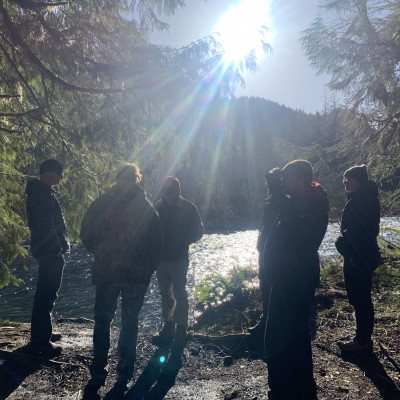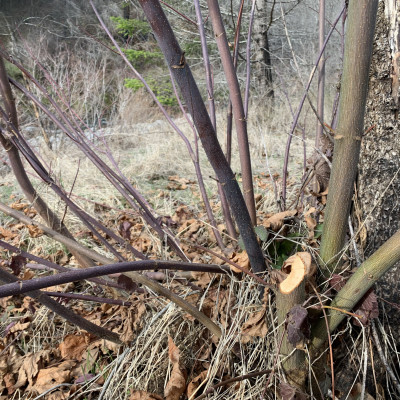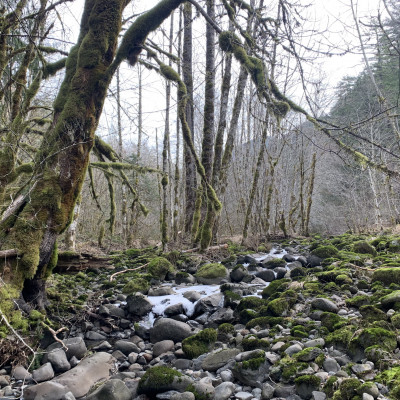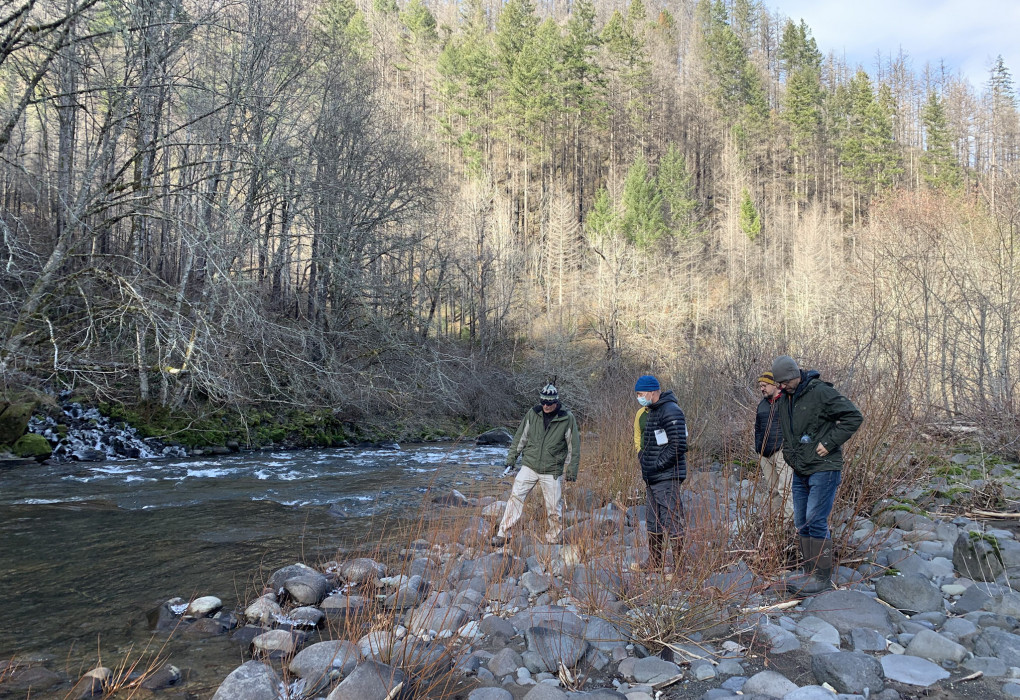Molalla River Restoration - PART IV: Coming 'Round The Bend With The BLM
*Note: This is Part Four of a Four Part Series. Read Parts One, Two, and Three.
The “Corner Bend” site doesn’t look all that impressive at first blush. Sure, it’s a good place for an apex jam that will help reconnect a side-channel that will provide spawning and rearing habitat, but it didn’t look particularly interesting beyond that.
But when Bill, the lead engineer, and Randy, the fluvial geomorphologist from Parr Excellence restoration, and I walked to the end of the side channel, we noticed a potential path for water to flow through and decided to follow it.
The BLM isn’t just donating trees to use for restoration on Fruit Grower’s property; they have also identified locations on their federally-owned lands that could be restored to provide better fish habitat. That potential water path Bill, Randy, and I followed led to the discovery of 3-5 acres of potential wetland and beaver habitat.
This is one of the exciting elements of the work we will do on BLM land; it won’t just be about adding large wood to the channel, but will also consist of reconnecting floodplain, water storage, fish rearing, and beaver habitat to the watershed. Restoring floodplain habitat is a win-win-win in watershed restoration.
Downstream communities benefit as floodplains retain high waters and reduce downstream flooding. Juvenile fish benefit from the creation of slackwater habitats that have high food densities and provide areas of refuge from fast water during floods. Finally, these locations are ideal places for beaver families to flourish. With more beaver active in the system, the hope is they can take over and do some of this floodplain restoration on their own.
The Corner Bend isn’t the only BLM-owned land we’re looking at restoring. We also looked at a site on the Table Rock Fork where lots of floodplain habitat can be reconnected to the channel.
***********************************************************************
After decades of abuse, the future is looking bright for wild, native fish on the Molalla River. Watershed-scale restoration requires complex partnerships to see success, and all the pieces are starting to fall into place for exactly this kind of partnership on the Molalla. This will be a years-long commitment, but we know it is work worth doing to help revive a key wild fish river back to its former glory.
Starting in the headwaters with Fruit Grower’s property will help change the hydrology and sediment movement to make the work we do further downstream on BLM lands more likely to succeed. And we would be remiss if we didn’t mention Molalla River Watch's work to help protect the groundwater-fed side channels that serve as important thermal refugia for juvenile Chinook and steelhead further downstream.
Keep following us for further updates as this restoration takes place and for all the exciting progress we make!
***********************************************************************
Want to stay up to date on Molalla restoration updates and/or be alerted for upcoming volunteer opportunities? Fill out the form below and we'll be sure to keep you in the loop!



